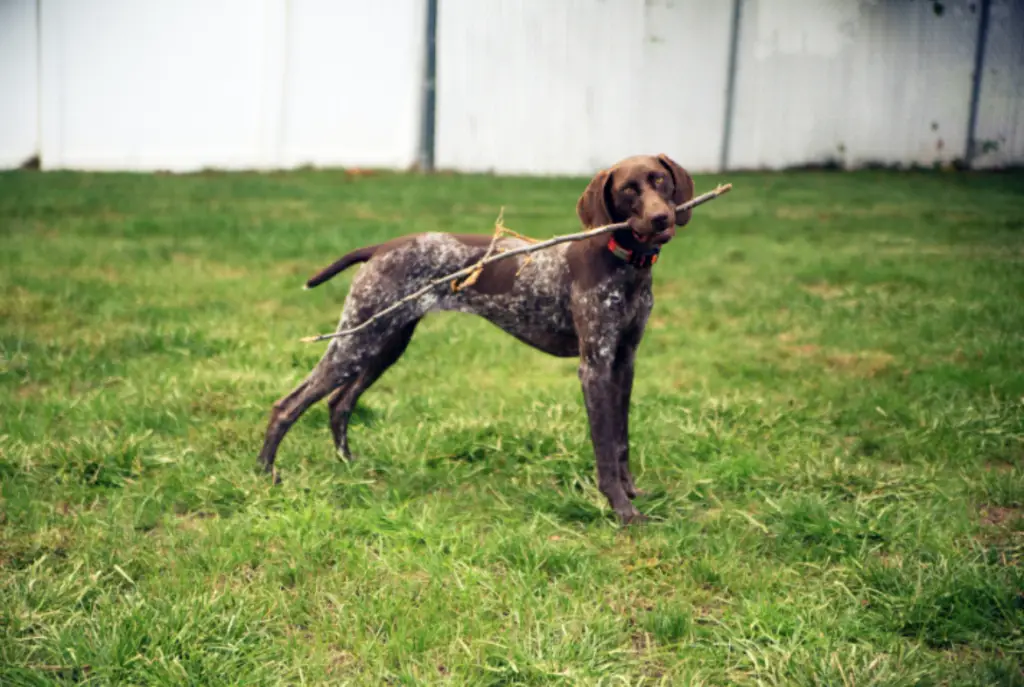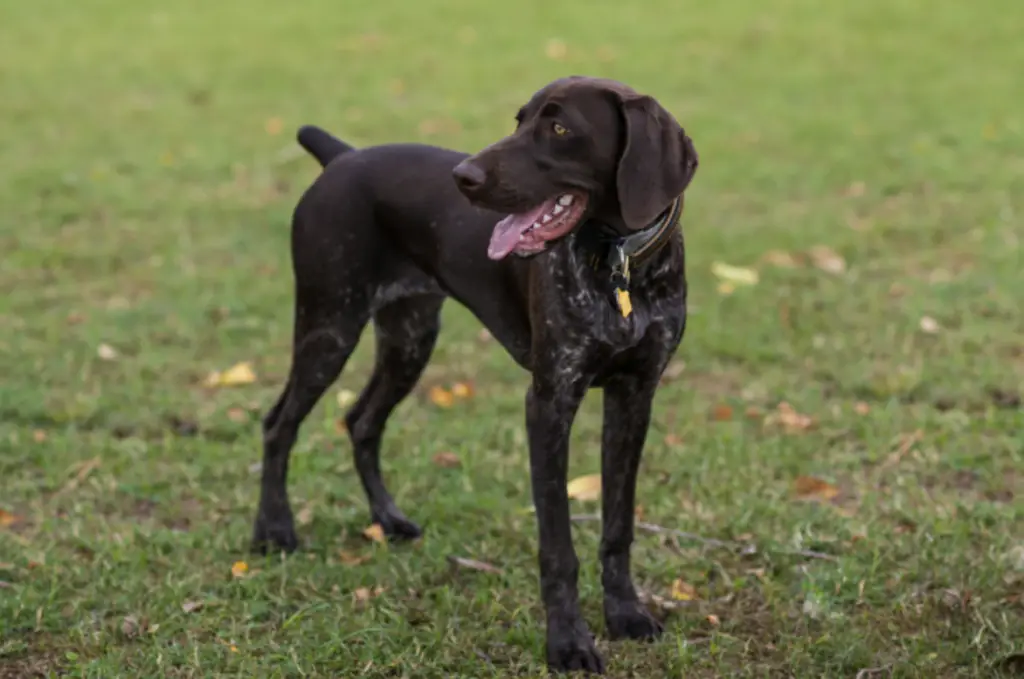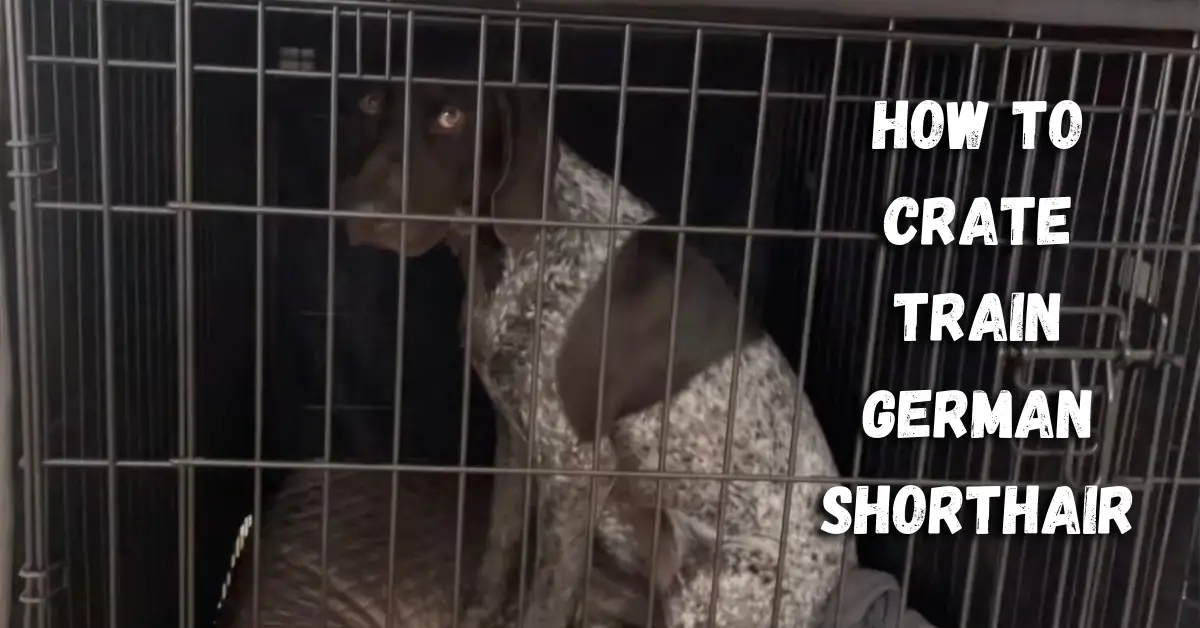Are you tired of living a boring, dog-less life? Want to spice things up with a furry, four-legged friend who will always be ready to play fetch or cuddle on the couch?
Look no further, because the German Shorthaired Pointer is here to save the day (and your sanity)!
But before you run off to the nearest pet store, grab your notepad and get ready to take notes on how to crate-train a German Shorthair!
Importance of Crate Training

Crate training for German Shorthairs can spark mixed reactions from their owners. Some first-time pet owners may initially be against the idea, and some may view crates as a form of imprisonment.
Crates can be good for dogs if used properly as they provide a safe and secure space for them to rest and sleep. Crates can also be useful for potty training, traveling, and reducing separation anxiety.
However, crates should never be used as a form of punishment or for extended periods of time without adequate exercise and opportunities for socialization. German Shorthairs are known for their hunting abilities and can exhibit stubbornness. They often pose challenges in training and have excessive digging and chewing habits. Crate Training is Crucial for a GSP and can be beneficial as:
- It will discourage its destructive behavior
- It gives your dog access to its own private space
- Crates are quite handy when traveling
- You can discipline your dog easily
Choosing the Right Crate
When it comes to selecting a crate for your dog, you want to make sure you choose the best one. It is important to ensure that the crate is the appropriate size for the dog and that they have enough room to stand, turn around, and lie down comfortably.
Size
Most German Shorthairs are medium-sized, but the crate size depends on their age.
A pup’s crate size depends on its growth rate. Since puppies grow rapidly, you should go for a full-sized crate with a divider. This way, it will be easy for your pup to adjust, and you won’t have to buy a new one as he grows.
When German Shorthairs reach an age group of 1.5-2 years, they stop growing. For an adult dog, a crate with 42L x 30W x 28H inch dimensions would be ideal. If you are still doubtful about the crate size, just remember that-
- The height should be such that your dog can sit and stand straight up inside it.
- The crate should be long and wide enough for your dog to spin around and stretch out.
Type
There are different types of crates in the market, but not every crate is ideal for German Shorthairs.
- Soft-sided crate: These crates are fabric made and easy to transport. They are ideal for nervous dogs who need a quiet and cozy place. They are also great for outdoor use.
- Wire Crate: Metal crates have a durable structure and are resistant to chewing. They have a wire mesh design for air ventilation to help your dog see the surroundings. It can also prevent your dog’s chewing habits.
- Plastic Crate: Plastic crates have compact, secured walls and are easy to clean. They are preferable for dogs who like to sleep in the dark. They are also helpful for dogs who feel anxious in wire crates.
Tips for Buyers
Don’t forget to consider these extra features as well:
- Durability: Look for a crate that is sturdy and made of high-quality materials, especially if you have a larger or stronger dog.
- Security: Make sure the crate has secure locking mechanisms, such as latches or bolts, to prevent your dog from escaping.
- Ease of Cleaning: Consider a crate that is easy to clean and maintain, especially if you have a messy or incontinent dog.
- Portability: If you plan on traveling with your dog or need to move the crate around frequently, look for a lightweight and collapsible option.
- Comfort: Look for a crate that has a comfortable floor and does not have sharp edges or corners that could harm your dog.
- Price: Dog crates can range in price from under $20 to over $200. Decide on a budget and look for a crate that offers the best combination of features within your budget.
Remember, the goal is to provide your dog with a safe, secure, and comfortable space. Take your time to research and choose the best crate for your furry friend.
Crate Training 101
Follow the steps below to be an expert in crate training your German Shorthair effortlessly.
Step 1: Introduce Him to The Crate
Put the crate in the family room or another common area of your house where the family spends most of their time. Leave the crate’s door open so that your dog can explore it for fun.
Bring him closer to the crate and keep some treats inside as bait if necessary. Encourage your dog to sniff the new crate, but if he refuses on the first try, don’t force him.
Step 2: Create a Calm Mindset
Try to find the appropriate time to train your dog, as it will motivate him to spend more time in his crate. If you put him in the crate during his playtime, he would naturally want to come out and have fun.
Instead, try to take him during a quiet or boring time so that he associates it with enjoyment. Start by keeping him in the crate for 10 minutes by tossing his toys inside. This may take a few trials.
Step 3: Make Sure He is Comfortable

To provide a relaxing environment in the crate, you should put a dog bed, soft blanket, or a towel inside it. By doing so, you will be able to give your dog a personal space that feels like home.
However, Shorthairs are somewhat destructive, so your dog may damage or urinate on the bedding. If he does so, let him sit on the crate mat.
Step 4: Start Feeding Him Inside
When your dog becomes familiar with the crate, start scheduling his meals inside it. Try to put the food with a toy in the back of the crate and see how he reacts.
If he refuses to go in, take out the dish and place it only as far as the point where he is not reluctant. Keep setting the food a little more backward every time you feed your dog. If he is comfortable, you can also close the door for a few minutes until he finishes the food.
Step 5: Experiment With Longer Crating Time
Now that your dog has become used to the crate, you can encourage him more by doing other activities. Place treats, give him hand and voice instructions, and play in the crate to link it with something positive.
Sit near the crate quietly for 10 minutes, go to the other room for a few minutes, come back, and repeat this process. Do this technique several times and gradually increase the time of leaving your dog out of sight.
Step 6: Training For Leaving Him Home Alone
When you have to leave your house, command your dog to enter the crate and leave him a few safe toys. Make a habit of keeping him inside between 5-20 minutes before leaving.
Give him a treat for entering the crate, and keep your departures and arrivals as lowkey as possible. If you have to be out long, make arrangements for someone to feed and walk him.
Step 7: Crate Him Overnight
Once your dog learns the above lessons, it will be easier for you to leave him in the crate overnight. Keep the crate in your bedroom, especially if your Shorthair is a puppy.
Allow him to sleep calmly, and if he whines in the middle of the night to pee or poop, let him out. After doing this for one to two weeks, you can try placing the crate in a different location.
Step 8: Have Patience
German Shorthairs are not quick learners and require at least six months of training. Training involves many ups and downs and even if you cannot see any visible progress, it is important to keep going.
With consistent training, your dog will learn and eventually want to get rewarded for staying in his crate. Just have patience and a calm approach, and success will come automatically. Here’s what not to do:
- Do not leave him with a collar or leash
- Do not force him if he is anxious
- Do not lock him for too long
- Do not use the crate for punishment
- Do not use it as a replacement for walking and training
Conclusion
Crate training is essential for making your German Shorthair wise and obedient. While the training process has its own challenges, the benefits are worth the effort. So, embrace the process of crate training and take this opportunity to make your and your Shorthair’s life easier.


